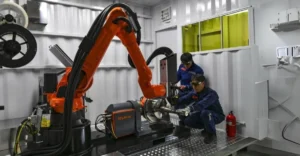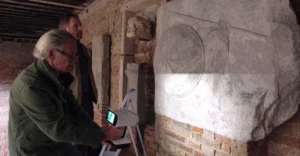European researchers under the 3DoP initiative create biodegradable 3D-printed scaffolds to enhance bone regeneration.
Additive manufacturing of bioresorbable 3D-printed bone scaffolds The European project 3DoP reported a novel progress in bone tissue engineering: bioresorbable 3D-printed scaffolds that could pave the way for bone regeneration.This is among the additive manufacturing applications the project is developing to target fractures, osteoporosis and skeleton defects.
The scaffolds are made up of polylactic acid (PLA) and chitosan, which mimics human bone structure, allowing cells to grow and, over time, being resorbed as the body creates new bone tissue. Co-funded by the European Commission’s Interregional Innovation Investments Instrument (I3), the initiative capitalizes on 3DoP’s additive manufacturing experience, including commercial projects to develop smart molds and automation.
“The scaffolds combine technical precision with sustainability,” said Dr. Elena Varga, a lead researcher in the consortium. “Our goal is to provide practical solutions that reduce surgical interventions.”
The scaffolds were developed through 3DoP’s second Open Call, launched in April 2025, which invites SMEs to collaborate on advancing 3D printing technologies. Selected companies gain access to EU labs, technical infrastructure, and mentorship to transition prototypes (TRL 6-7) to market-ready products (TRL 9). Early testing in certified facilities demonstrated the scaffolds’ biocompatibility and mechanical durability, with animal trials showing improved regeneration rates.
The Open Call, active until September 2025, follows three pathways: co-developing unfinished technologies, validating innovations in labs, and providing non-technical business support. Eligible SMEs must be based in EU member states or associated countries and utilize 3DoP’s additive manufacturing resources.
Read more : How 3D-Printed Microfactories Are Revolutionizing Waste Recycling
The project’s broader aim is to strengthen Europe’s innovation ecosystems by linking SMEs with academic and industry partners. Future steps include refining scaffold designs for clinical trials, potentially by 2027.
































